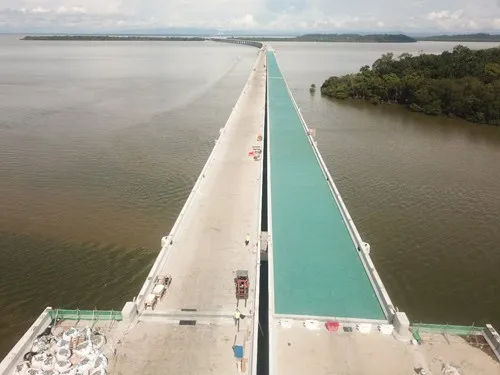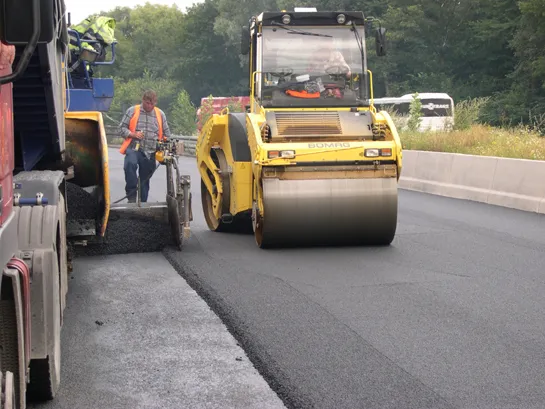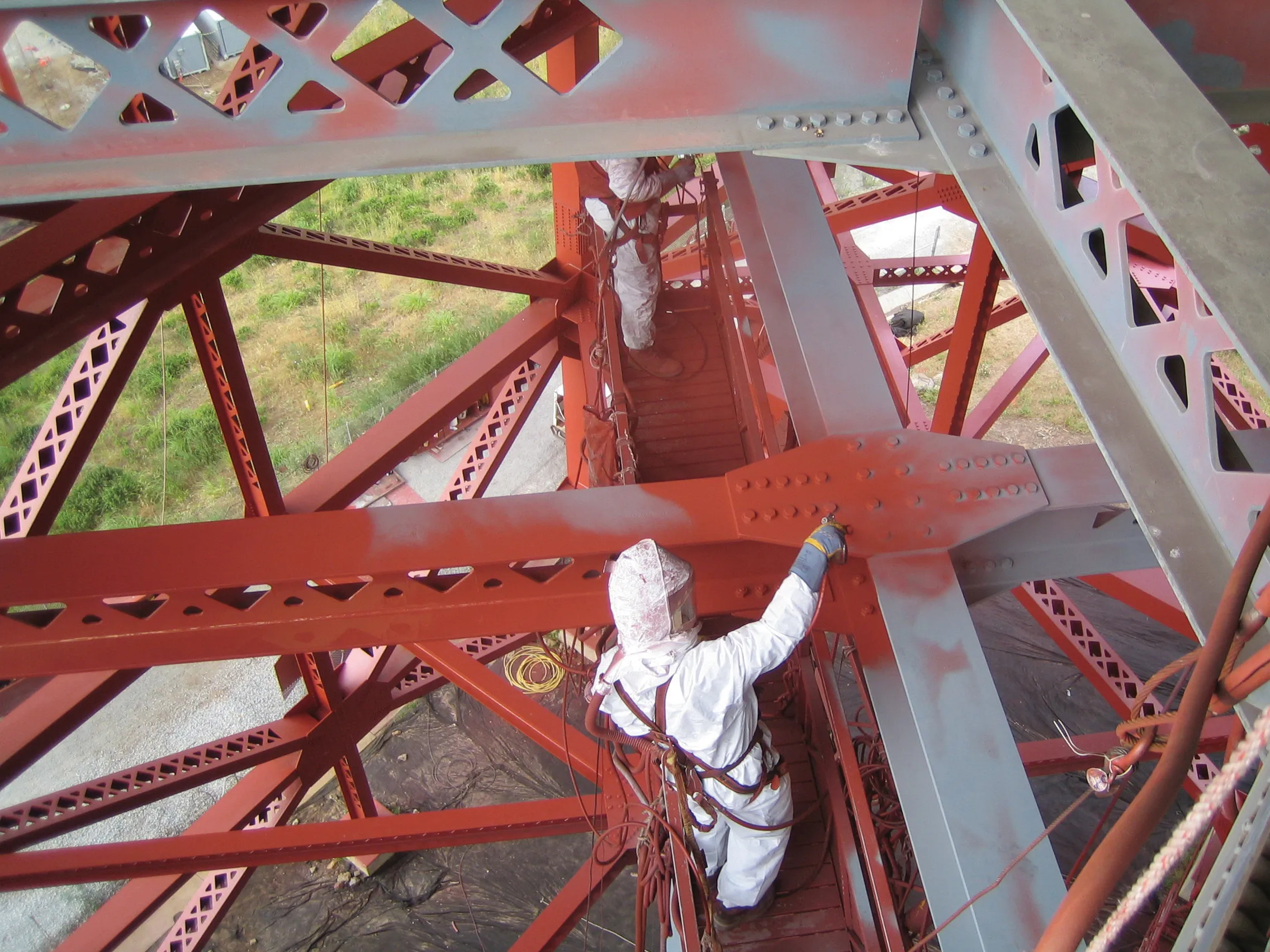
Pitchmastic PmB is wrapping up its bridge-deck waterproofing work on South East Asia’s longest over-sea crossing, the 30km Temburong Bridge in Brunei.
PmB’s work started in April on the US$1.2 billion Temburong Bridge that will, when finished, connect Mengkubau and Sungai Besar in Brunei-Muara District and Labu Estate in the exclave Temburong District. Residents of Temburong will no longer have to travel through Malaysia and the local government hopes the bridge will also boost eco-tourism in the area.
The Temburong Bridge contract is the largest bridgedeck waterproofing project ever undertaken by the USL Group, parent company of Pitchmastic PmB International. It required a weekly output of around 10,000m² of the completed PmB system.
PmB protects the reinforced concrete from the effects of water and airborne contamination that would otherwise lead to corrosion and deterioration of the structure. Asphalt is easily laid on top of the PmB system.
Pitchmastic PmB International has many projects in South East Asia as well as the Middle East, including the RA214 Doha Link project - part of the strategically important Sheikh Al Jaber Ahmad Causeway in Kuwait. The project spans nearly13km from Doha to Shuwaikh and involves the supply and installation of 280,000m² of PmB. Multiple teams of Pitchmastic worked alongside highly skilled local support from the project’s main contractor, Korean giant GS Engineering and Construction.









